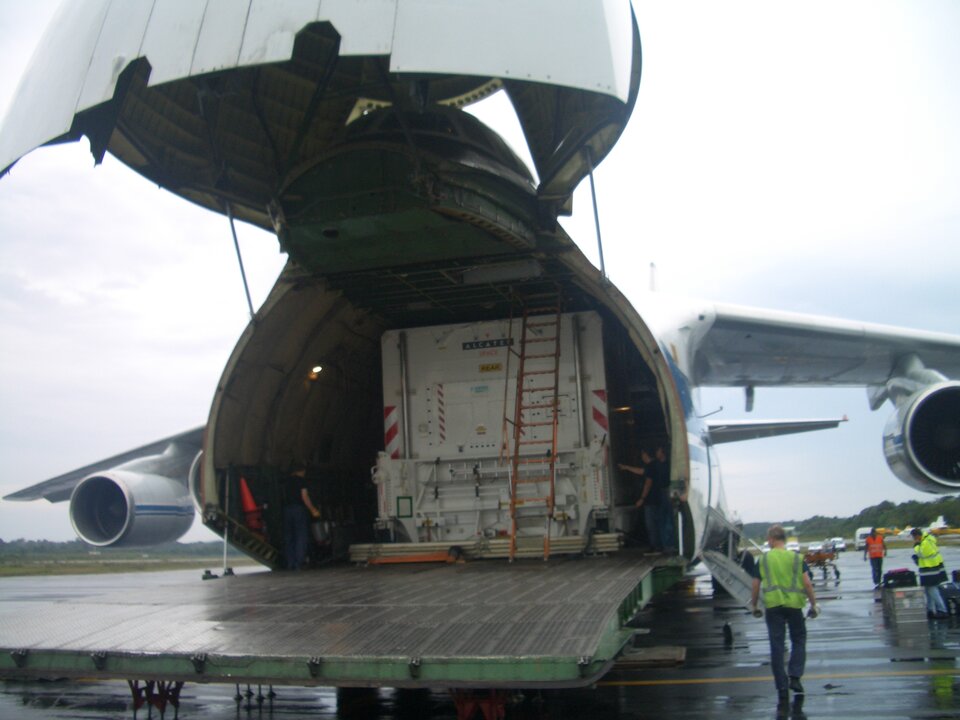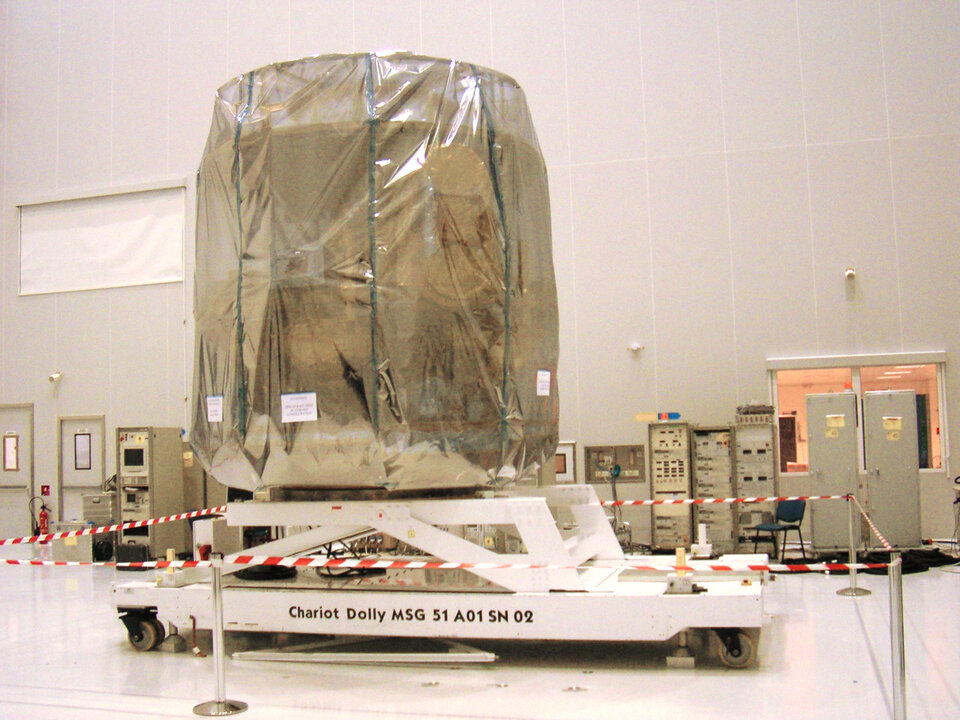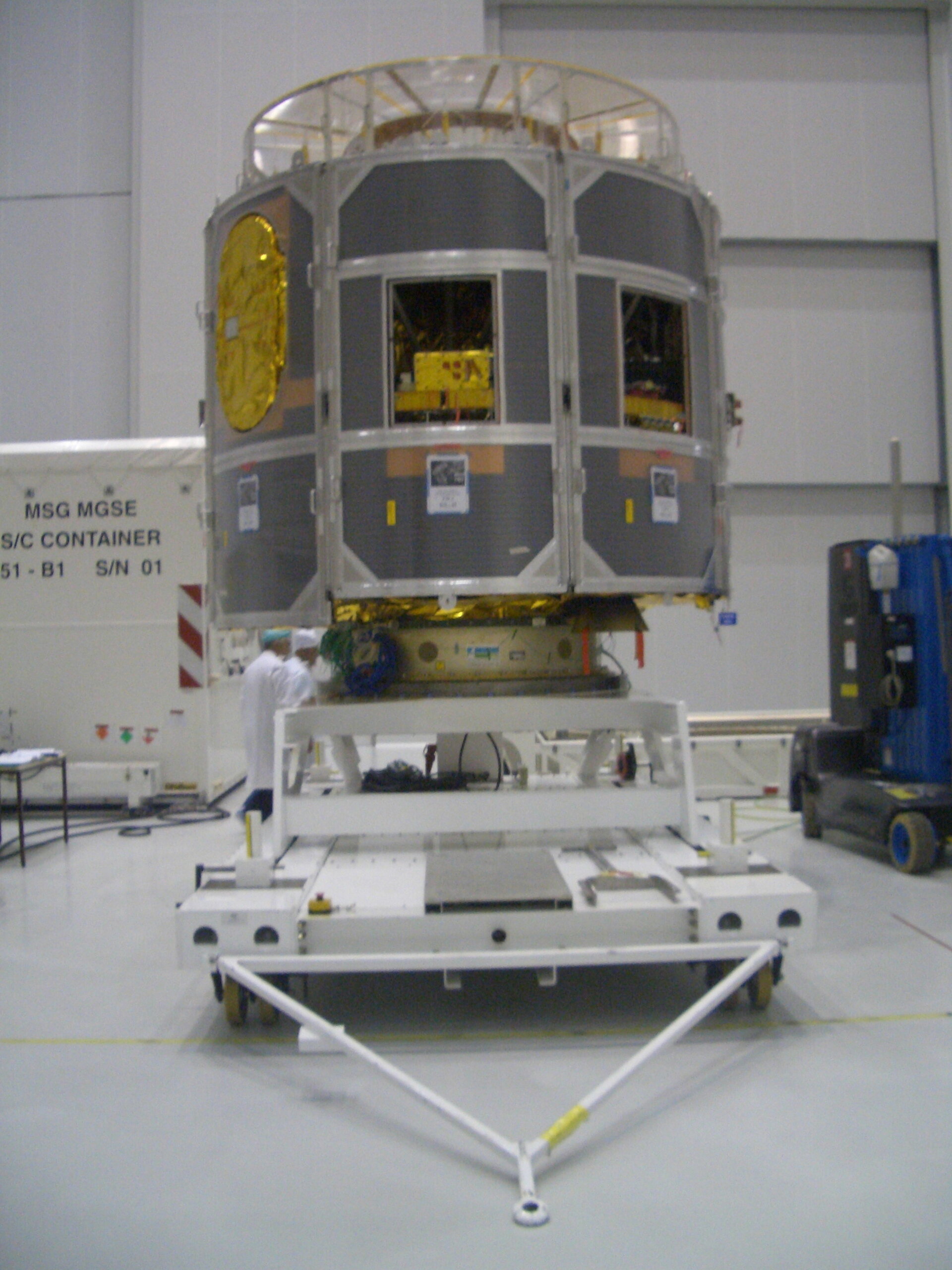MSG-2 now planned for launch towards year's end
A new slot has been identified for the second Meteosat Second Generation (MSG) satellite which is now due to be launched towards the end of 2005.
This announcement was made by Arianespace last week, following findings concerning the Ariane 5 GS vehicle which affected the launch date foreseen for early autumn 2005.
The MSG-2 satellite was already shipped to Kourou, French Guiana on 21 June and is being kept in storage after extensive testing confirmed the functionality of the platform and instruments after transport.

Detailed analyses were also successfully concluded to verify that MSG-2’s sensitive instruments, like the Spinning Enhanced Visible and Infrared Imager (SEVIRI) and the Geostationary Earth Radiation Budget (GERB), would not be damaged during the launch.
Given the new slot the launch campaign is scheduled to resume no earlier than 10 October.
For almost 30 years ESA has been building Europe's orbital weather satellites: the Meteosat series of geostationary spacecraft, the first of which was launched in 1977. The success of the early Meteosats led to the creation of the European Organisation for the Exploitation of Meteorological Satellites (EUMETSAT) in 1986.

ESA and EUMETSAT worked together on the later satellites in the series, designed to deliver continuous weather images to European forecasters on an operational basis.
This cooperation between the two international organisations continues now the original satellites are gradually being replaced by a new, second generation of Meteosats.
The first of these (MSG-1, now known as Meteosat-8) was launched in August 2002 and declared operational in January 2004. With the launch of MSG-2, continuity of service will be ensured further into the future.
European forecasters and researchers are already benefiting from the advanced data and images provided by Meteosat-8. The image data generated by its 12 spectral channels provide 20 times the information of previous generation satellites.
Meteosat-8 disseminates improved information and imagery for weather forecasting as well as other applications such as hydrology, agriculture, environmental studies as well as risk prevention and disaster warnings. The data collected are routinely used for the study of weather and climate change.

EUMETSAT is currently operating Meteosat-6, -7 and -8 over Europe and Africa, and Meteosat-5 over the Indian Ocean. The data, product and services from these satellites built by ESA for EUMETSAT make a significant contribution to weather forecasting and to the monitoring of the global climate.







